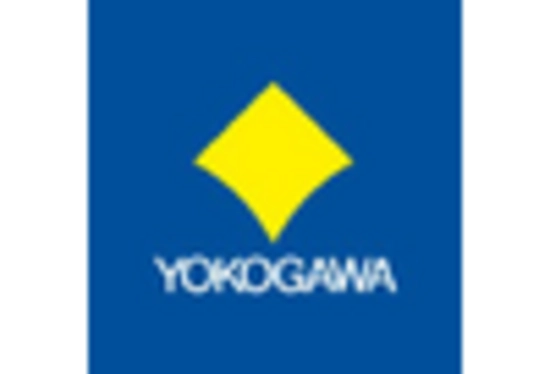Rising Demand for Energy Efficiency
The increasing emphasis on energy efficiency across various sectors appears to drive the Thermal Energy Flow Metering Solution Market. Organizations are actively seeking solutions that can optimize energy consumption and reduce operational costs. According to recent data, energy efficiency measures can lead to savings of up to 30% in energy costs. This trend is particularly evident in industries such as manufacturing and commercial buildings, where energy expenditures constitute a significant portion of operational budgets. As a result, the demand for thermal energy flow metering solutions, which provide precise measurements and analytics, is likely to grow, enabling organizations to make informed decisions regarding energy usage and management.
Growing Awareness of Environmental Impact
The increasing awareness of environmental issues and climate change is driving organizations to adopt more sustainable practices, including the use of thermal energy flow metering solutions. Companies are recognizing the importance of reducing their carbon footprint and are actively seeking technologies that facilitate this goal. The Thermal Energy Flow Metering Solution Market is experiencing growth as businesses implement solutions that provide insights into energy usage and help identify areas for improvement. This shift towards sustainability is not only beneficial for the environment but also enhances corporate reputation and can lead to competitive advantages in the marketplace.
Regulatory Pressures and Compliance Requirements
Regulatory frameworks aimed at promoting energy efficiency and sustainability are exerting pressure on industries to adopt thermal energy flow metering solutions. Governments and regulatory bodies are implementing stringent guidelines that mandate accurate energy measurement and reporting. This trend is particularly pronounced in sectors such as utilities and manufacturing, where compliance with energy regulations is critical. The Thermal Energy Flow Metering Solution Market is likely to benefit from these regulatory pressures, as organizations seek to avoid penalties and enhance their sustainability profiles. Compliance not only ensures adherence to laws but also fosters a culture of accountability in energy consumption.
Technological Advancements in Metering Solutions
Technological innovations in thermal energy flow metering solutions are likely to enhance the capabilities and applications of these systems. The integration of advanced sensors, IoT connectivity, and data analytics tools is transforming the way energy consumption is monitored and managed. For instance, the introduction of wireless communication technologies allows for real-time data transmission, which can improve operational efficiency. The Thermal Energy Flow Metering Solution Market is witnessing a shift towards more sophisticated metering solutions that not only measure energy flow but also provide actionable insights. This evolution may lead to increased adoption rates among industries looking to leverage technology for better energy management.
Expansion of District Heating and Cooling Systems
The expansion of district heating and cooling systems is likely to create new opportunities for the Thermal Energy Flow Metering Solution Market. As urban areas continue to grow, the demand for efficient heating and cooling solutions is increasing. District systems, which provide centralized heating and cooling to multiple buildings, require precise metering solutions to ensure equitable distribution and billing. The implementation of thermal energy flow metering solutions in these systems is essential for optimizing performance and enhancing customer satisfaction. This trend may lead to a surge in demand for advanced metering technologies that can support the growing infrastructure of district energy systems.

















Leave a Comment